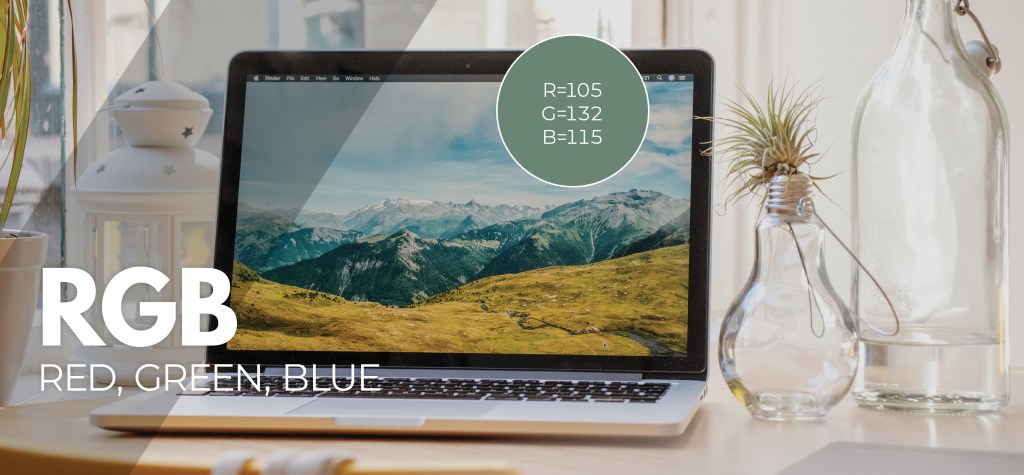Have you ever been confused by an email from a printer requesting files with PMS / CMYK format?
Wonder why the logo you uploaded to social media looks a different colour to your business cards?
Stumped by the acronyms in your files?
There’s a huge difference between printing inks (CMYK & PMS) and displaying colours on screens (RGB & HEX), so file formats enable that across devices. Here’s a quick explanation of the basic colour systems you will encounter as you navigate business life…

An expression of red, green and blue light – 256 shades of each colour added together to produce a total of 16.8 million possible colors. Full values of each colour result in white, while zero values result in black (darkness!)
USE: screens (TV, mobile devices, social media, games and illuminated signs)

A six-digit combination of numbers and letters that represent an RGB colour.
USE: mainly web design / quick reference screen colours

CMYK is a process by which tiny dots of cyan, magenta, yellow and black inks mix to make colours. 100% values of each colour creates a super saturated black, white zero values for all four leaves the page blank.
USE: digital printing (brochures, flyers, posters, packaging)

PMS colours (also referred to as Spot Colours) are patented, standardised colour inks for offset printing. They are ideal for stationery or when exact colour representation is essential, and are also used for specialty inks such as white or gold.
USE: offset printing (stationery, specific brand colours or special inks)
So when you’re looking at branding design, make sure your designer includes all the above colour format codes, so that you’re never stumped when asked for the right information for print or web applications.
